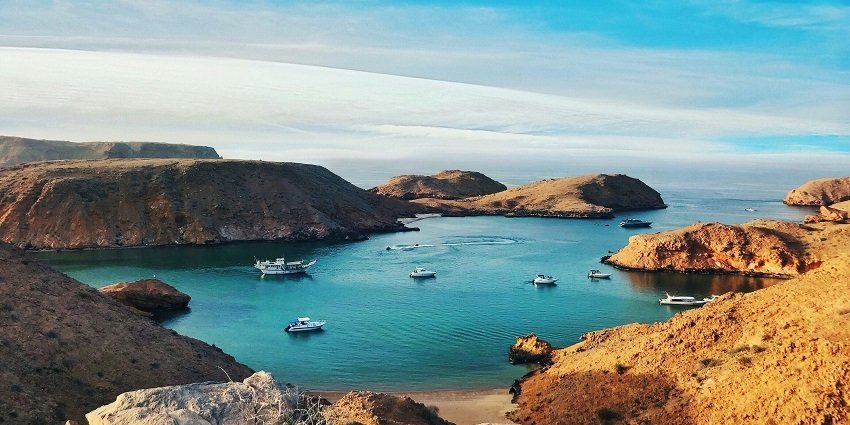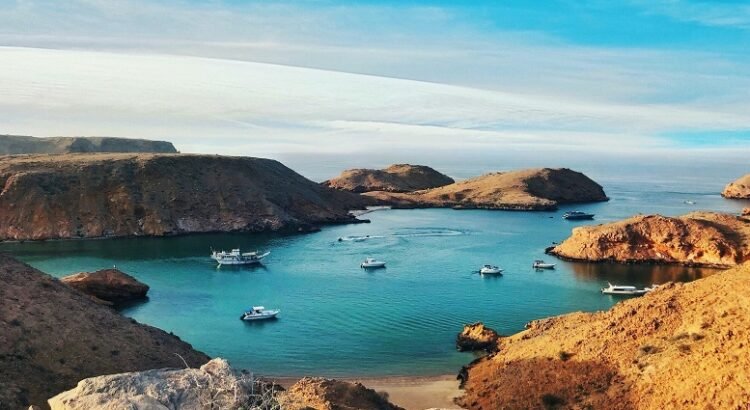
There is a place where ancient traditions meet breathtaking natural beauty, where the scent of frankincense fills the air and warm greetings welcome you like family. This is the Arabian Peninsula—not the endless desert expanse you may imagine, but a landscape that surprises with its towering mountains, serene coastlines, and legendary hospitality. Whether you’re sipping cardamom coffee in a mountaintop village or wandering along a turquoise bay, the Arabian spirit reveals itself not only in the setting but in the generosity and grace of its people.
To travel here is to be embraced—not as a tourist, but as an honored guest. Let us take you on a journey through the heart of Arabia, where hospitality is sacred, the mountains are storied, and the seas whisper ancient tales.
A Region of Contrast and Beauty
The Arabian Peninsula encompasses several nations, but when speaking of stunning coasts and mountain hospitality, Oman, parts of Saudi Arabia, and the United Arab Emirates (UAE) rise to the forefront. These lands offer dramatic diversity: sun-scorched deserts melt into cool highlands, and ancient ports open to the Arabian Sea and the Gulf of Oman.
What binds these regions together is the Arab cultural heritage—a tradition steeped in storytelling, respect, family values, and a deep code of welcoming strangers as kin. Nowhere is this more alive than in the places where mountains meet the sea.
The Enchantment of Oman: Jewel of Arabia
Perhaps no country better represents the fusion of landscape and hospitality than Oman, a nation long known for its openness, humility, and deeply preserved traditions.
The Hajar Mountains: A Rugged Heart
The Hajar Mountains, which stretch across northern Oman, offer travelers a refreshing escape from the heat and a gateway into highland life. Villages like Misfat Al Abriyeen and Al Hamra are perched high on cliffs, surrounded by terraced farms and ancient falaj irrigation systems.
Here, visitors are often invited into homes for dates and qahwa (Omani coffee). Hospitality is offered without expectation—an expression of pride and cultural duty. Many homes maintain a majlis, a special sitting room for guests, adorned with colorful cushions, silver incense burners, and soft carpets. It is in these settings that stories are shared, customs explained, and friendships quickly forged.
Trekking through Jebel Shams, the “Mountain of the Sun,” rewards adventurers with panoramic views of Wadi Ghul, Oman’s version of the Grand Canyon. After a day of hiking, a local guesthouse or homestay may offer a home-cooked meal of shuwa (slow-roasted lamb), rice with saffron, and freshly baked khubz (bread).
Musandam Peninsula: Arabia’s Fjords
Far to the north, the Musandam Peninsula, separated from the rest of Oman by the UAE, is a rugged enclave where the mountains dive dramatically into the sea. This region is often called the “Norway of Arabia” for its dramatic fjord-like inlets, known locally as khors.
The best way to explore Musandam is by traditional dhow boat, gently cruising past cliffs and hidden fishing villages like Khasab. The water is crystal-clear and home to dolphins, while above, falcons soar across jagged peaks. Despite its isolation, Musandam is home to resilient communities who maintain ancient ways of life, including honey harvesting, goat herding, and boat building. Visitors are frequently welcomed with open arms and served sweet tea and stories of the sea.
Southern Arabia: Dhofar’s Frankincense and Coastal Magic
Southern Oman’s Dhofar region, centered around the city of Salalah, offers an entirely different Arabian experience. Here, the land bursts into green during the Khareef (monsoon) season, when the mountains are covered in mist and waterfalls tumble through valleys.
Dhofar is the ancient heartland of the frankincense trade, and the scent still lingers in the air. Frankincense is more than a resin here—it is a symbol of purity and is burned in homes, shops, and even car dashboards as a sign of welcome. In mountain villages like Jebel Samhan, local families may greet travelers with sambusa, lemon-mint juice, and stories of caravan days.
Dhofari hospitality is defined by calm dignity and abundant kindness. Whether you arrive during Eid or a simple weekday, you’re likely to be treated like a long-lost relative.
The Saudi Highlands and Red Sea Coast
While Saudi Arabia is more often associated with desert expanses and religious pilgrimage, its southwestern highlands and Red Sea coast offer some of the most surprising hospitality experiences in the kingdom.
Asir and the Flower Men of Arabia
The Asir region, near the city of Abha, is home to verdant landscapes, colorful houses, and the Qahtani tribes, famed for their rich traditions. One of the most unique sights here is the “flower men”—men from the Tihama valleys who wear floral wreaths and garlands in their hair, a tradition dating back centuries.
Hospitality here is performative and poetic. Guests are welcomed with poems sung aloud, incense offered with a flourish, and coffee served in ornate dallahs. A visitor might be guided through a family farm, shown how to pick khat leaves or wild herbs, and then seated under grapevines for an afternoon meal of madghut or jareesh.
The Red Sea: Jeddah to Al Lith
The Red Sea coast of Saudi Arabia blends Islamic history, coral reefs, and warm seaside culture. In towns like Al Lith or Farasan Island, locals are eager to share their fishing heritage and traditional seafood dishes like sayadiyah (spiced fish and rice).
Fishermen may invite travelers aboard their wooden boats, offering not just a ride but stories of pearl diving and old maritime routes to Africa and India. Whether it’s a Bedouin camp in the desert or a seaside tent on the coast, hospitality is a sacred responsibility in Saudi culture—one that every citizen upholds with pride.
The United Arab Emirates: Tradition Meets Modernity
While known for its skyscrapers and luxury, the UAE still maintains deep Emirati traditions, especially in the mountains of Ras Al Khaimah and the coastal communities along the Gulf of Oman.
The Hajjar Mountains: Life in the Highlands
In Ras Al Khaimah, you’ll find Jebel Jais, the UAE’s highest peak, offering hiking, zip-lining, and even stone house villages preserved from ancient mountain life. Though the development here is modern, the people are deeply connected to their Bedouin roots.
Visitors might be hosted in a desert camp or mountain farm, with meals of harees and luqaimat (sweet dumplings) served with spiced date syrup. Even among the Emirati youth, pride in tradition remains strong—majlis culture, oral storytelling, and generous welcoming of guests are ever-present.
The Ritual of Coffee and Dates: A Sacred Welcome
No matter where you go in Arabia—from a fisherman’s hut to a palace—the ritual of serving coffee and dates is universal. Known as qahwa, this lightly roasted coffee is infused with cardamom and served in small cups from a dallah. It is always accompanied by tamr (dates), often grown in the host’s own garden.
But this isn’t just a snack; it’s a symbol. In Arabian culture, the first gesture of welcome is offering sustenance. And as a guest, accepting coffee is a sign of respect, gratitude, and participation in a timeless tradition.
Modern Hospitality: Where Luxury Meets Soul
In cities like Muscat, Jeddah, or Dubai, hospitality has taken on new forms—luxury resorts, eco-retreats, curated experiences—but the soul of it remains unchanged. You’ll find five-star hotels where concierges greet you with Arabic proverbs, or eco-lodges in the mountains that serve food from traditional clay ovens.
Many of these modern experiences are run by local families or tribes, and often combine comfort with cultural authenticity. Whether it’s an Omani woman teaching you how to weave palm fronds or a Saudi youth explaining the significance of incense, the essence is the same: to share, to welcome, and to connect.
A Culture of Stories and Song
Perhaps one of the greatest gifts of Arabian hospitality is the gift of story. Around fires or over meals, you’ll hear legends of lost cities, tales of prophets and poets, and memories of nomadic ancestors crossing mountains and seas.
You may be serenaded with oud music, listen to a spontaneous poem, or be invited to dance the ardha, a traditional sword dance. These aren’t performances for tourists—they’re living traditions, offered with sincerity and joy.
Conclusion: Come As A Guest, Leave As Family
To discover Arabian hospitality amidst mountains and sea is to embark on a journey of the heart. You may arrive expecting landscapes—and find them breathtaking—but you will leave remembering people: the old man who shared his bread, the child who brought you tea, the woman who blessed your travels with a smile.
In this part of the world, hospitality is not a transaction—it is a reflection of identity. The Arabian host gives not because he must, but because to give is to live nobly. And in doing so, he invites you not just into his home, but into his history, his culture, and his soul.
So whether you seek mountain air or ocean breeze, adventure or quiet reflection, let Arabia welcome you. The door is open, the coffee is hot, and the stories are ready.




